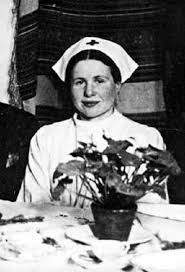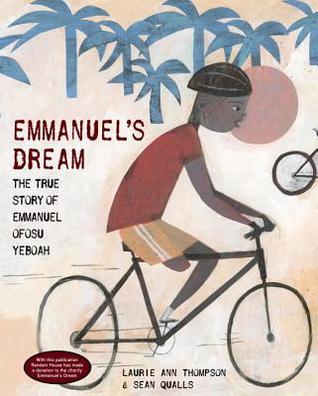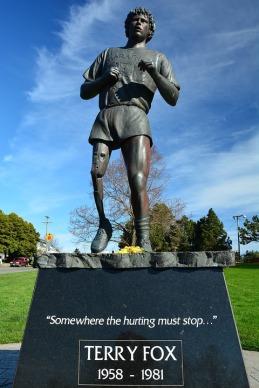Black Residents Walking, Montgomery Bus Boycott, 1955
Image: Public Domain
You can buy Boycott Blues here.
Citation:
Pinkney, A.D. & Pinkney, B. (Illustrator). (2008). Boycott Blues: How Rosa Parks Inspired a Nation. New York: New York, Greenwillow Books.
To Use or Not to Use:
Definitely use.
I used this book during Black History Month and, even though it’s not Canadian, I am glad I did. A lot of my students knew about Rosa Park’s stand, but none of them knew about the consequent Montgomery Bus Boycott. I paired this book with some Civil Rights-era blues as recommended in the teacher’s guide, and found the lesson very powerful.
Themes:
Racism, injustice, civil rights, human rights, Black history, segregation, integration, justice, standing up for others, solidarity, nonviolent protest.
Genre:
Non-fiction (historical)
Type:
Picture book
Grade Range:
Grades 4+
This is a pretty long text with lots of metaphors, so I have recommended it for older readers.
Curricular Connections:
Content:
-Grade 2 (SOCIAL STUDIES) “rights and responsibilities of individuals regionally and globally”
Talk about what rights students have as global citizens. Do they only have an obligation to fight for justice when they are being treated unjustly?
-Grade 5 (SOCIAL STUDIES) “past discriminatory government policies and actions, such as the Head Tax, the Komagata Maru incident, residential schools, and internments”
-Grade 5 (SOCIAL STUDIES) “human rights and responses to discrimination in Canadian society”
-Grade 6 (SOCIAL STUDIES) “global poverty and inequality issues, including class structure and gender”
-Grade 4 (ART) “visual arts: elements of design: line, shape, space, texture, colour, form; principles of design: pattern, repetition, balance, contrast, emphasis, rhythm, unity, variety”
This book certainly is full of careful, meaningful, symbol-laden illustrations.
-Grades 4-7 (ART) “Symbolism and metaphor to explore ideas and perspective”
Curricular Competencies:
-Grade 4-7 (ART) “Interpret and communicate ideas using symbolism to express meaning through the arts”
-Grade 4 (ENGLISH) “Listening carefully helps us learn.”
Emphasize this as you listen to the music if you choose to use Josh White’s songs.
-Grade 4 (ENGLISH) “Use a variety of comprehension strategies before, during, and after reading, listening, or viewing to construct meaning from text”
-Grade 4 (ENGLISH) “Apply a variety of age-appropriate thinking skills to gain meaning from texts”
-Grade 4 (ENGLISH) “Respond to text in personal and creative ways”
-Grade 4 (ENGLISH) “Recognize/Understand how literary elements, techniques, and devices enhance meaning in texts”
Core Competencies:
-Social Responsibility
Summary:
Written in verse, full of metaphors and meaningful colour choices, this book is narrated by a blues-singing dog named Dog Tired who strums away at his guitar on the sidewalk, on rooftops, and in the corners of pages. The Jim Crow segregation laws are described as an ominous black crow that pecks away at African American people and their rights. They/he is depicted as a messy, black blob.
The story begins on December 1st, 1955 when Rosa Parks, an African-American woman, decided she would not give her seat on the bus to a white passenger. The bus driver and Jim Crow team up to peck away at Rosa, but she courageously refuses to move. Rosa is arrested, but her friends raise money for bail. The Black community decides they are going to stand together and protest racism by boycotting the buses until they are allowed to sit in any seat they wish. Martin Luther King Jr. gathers a crowd in a local church and encourages people to fight non-violently against racism in Montgomery. They walk for ninety days. One-hundred and eighty. Three hundred. It rains. It boils. The dust blows. Black and white people band together, choosing to boycott the bus and to work together to help people get where they need to go. But Jim Crow keeps working too; he is doing his best to keep discrimination strong. Some people begin to lose hope, and the bus seems awfully tempting “[e]ven if it means riding in the back. Even if Jim Crow sits in [their] lap[s]” (25). That’s when Dog Tired steps in and plays his songs loud enough to drown out Jim Crow.
On November 13th 1956, the Jim Crow laws are struck down and all the people of Montgomery are allowed to sit anywhere they want on the city buses. Segregation is no longer legal. By December 21st, 1956 the law was official; after three-hundred and eighty-two days of walking, Rosa Parks and other African American people could finally return to the buses with dignity. Dog Tired credits the blues with inspiring people to persevere, and he explains how blue can symbolize promise and hope. Suddenly, the people’s “low-down tune” was exchanged for a song of celebration (32).
The book closes with a brief author’s note about the Montgomery bus boycott.
Teaching Tips:
As mentioned above, this book would tie in beautifully with Black History month. It also provides students with a fantastic female role model. Connections could easily be made between Viola Desmond and Rosa Parks. This book would also tie in with anti-bullying as students can use terms like “ally” to describe white people who joined in on the bus boycott.
The publisher has released a very good teacher’s guide that can be found here.
You can buy Boycott Blues here.
Lesson Plan:
| Social Studies |
Black History Month – Viola Desmond Won’t Be Budged! |
Length |
~50 minutes |
| Big Ideas
Essential Questions |
Canada’s policies and treatment of minority peoples have negative and positive legacies (although this story is American).
Dance, drama, music, and visual arts are each unique languages for creating and communicating.
How can I stand up against injustice? |
| Learning Intentions |
Students should see how racism impacted people similarly in Canada and the United States. They will learn about boycotts and non-violent protests through an example of a successful bus boycott. |
| Curricular Competencies |
Ask questions, corroborate inferences, and draw conclusions about the content of different sources (musical analysis)
Explore connections to identity, place, culture, and belonging through creative expression
Observe, listen, describe, inquire and predict how artists (dancers, actors, musicians, and visual artists) use processes, materials, movements, technologies, tools, techniques, and environments to create and communicate
Describe and respond to works of art and explore artists’ intent |
| Components |
-Definitions and debrief of terms
-Josh White’s “Jim Crow” – listen and discuss
-Reading and discussion of Boycott Blues
-Josh White’s “Freedom Road” -listen and discuss
-Pictures of individual activists
-Exit slips “What’s one thing you learned or found interesting about the Montgomery Bus Boycott?” |
| Sequence: |
5 minutes – Set tone
Explain to students that we will be reading a real story and they need to act respectfully).10 minutes – Define terms and set historical context.
Terms: racism, segregation, Jim Crow, boycott, and Blues (music).
Put dates on the board: 1834, 1865, 1955. These are the dates that slavery was outlawed in the British Empire (and, consequently, Canada), the date it was outlawed in the U.S. (where our story takes place today), and the date that this story takes place. Some students may need an explanation of what slavery is and how it pertains to African peoples. Tell students that racism did not end immediately after slavery was outlawed. Viola Desmond was kicked out of the theatre 112 years after slavery was outlawed in Canada, and in the story we will read today, we will see that there was still a lot of racism in 1955: ninety years after slavery was outlawed in the United States.18 minutes – Play Josh White’s “Jim Crow”
Be sure to explain first that there are terms in this song we would not use today (negro). Discuss. What did you hear? How did that sound? Did any words jump out at you? How did that make you feel?35 minutes – Boycott Blues
Stop intermittently for discussion.
42 minutes –Play Josh White’s “Freedom Road”
Discuss. What did you hear? How did that sound? Did any words jump out at you? How did that make you feel?50+ minutes – Share activist stories
Interviews and videos of those involved in the boycott can be found here: http://www.montgomeryboycott.com/voices-of-the-boycott/
Closing – Exit slips
Share one thing you found interesting about the Montgomery Bus Boycott or one thing you did not know before. |
| Materials Needed |
Boycott Blues
Youtube & speakers for music
Powerpoint with pictures of activists if you choose not to play videos
Exit slips |
| Assessment |
Anecdotal (discussion)
Exit slips |


 You can buy Emmanuel’s Dream
You can buy Emmanuel’s Dream 

 Citation:
Citation: